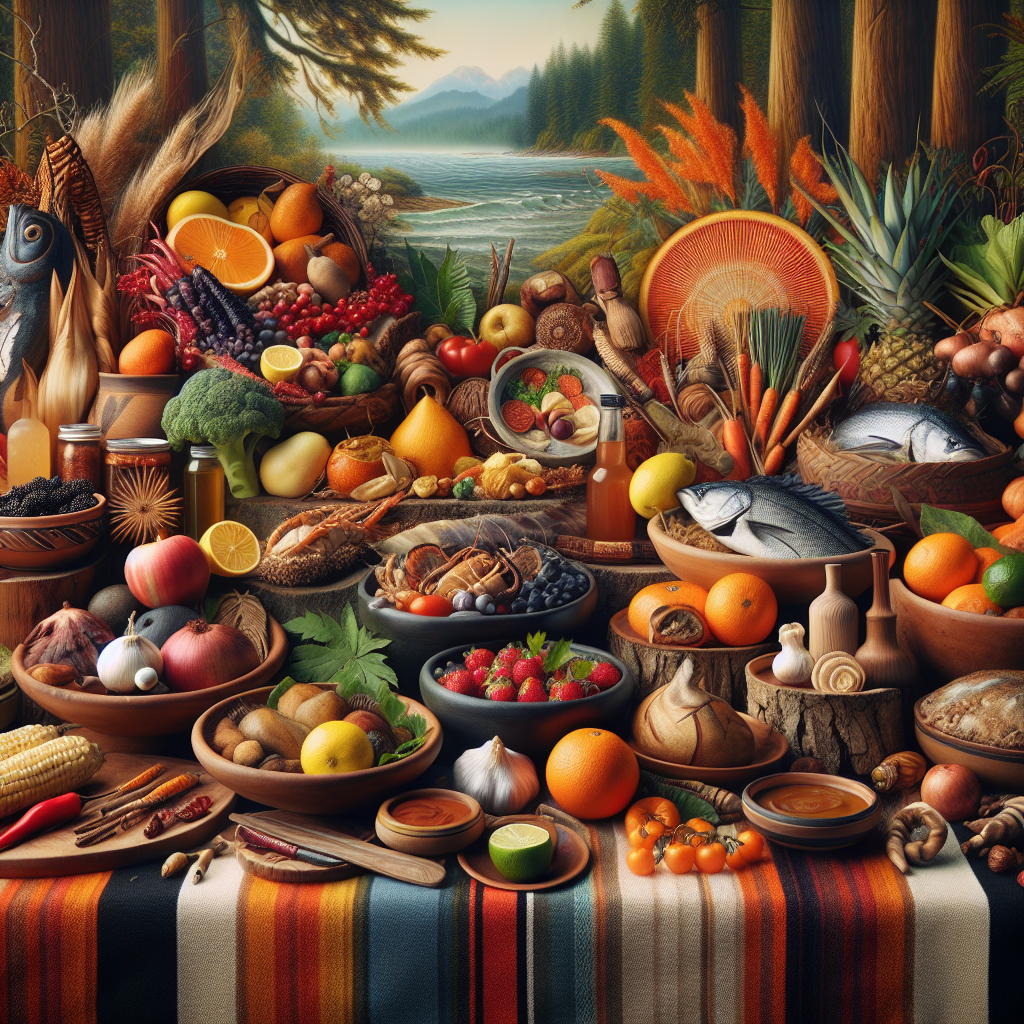A Brush with the Past: Traditional Indigenous Foods of Oregon
When you stroll through any Oregon farmer’s market on a breezy Saturday morning, you’re not just experiencing the abundance of The Beaver State’s modern harvest. You are, in ways often overlooked, tracing the ancient foodways and rich culinary heritage of Oregon’s indigenous peoples. These cultural traditions, braided into the very roots of Oregon’s breathtaking landscapes, serve as flavorful testimonies to the skill, wisdom, and remarkable resourcefulness of the area’s original inhabitants.
Weaving from Columbia River shores in Astoria, through the Crater Lake’s dense coniferous forest, to the high desert prairies roaming with pronghorns in John Day, Oregon is a continuous tapestry of indigenous lore and sustenance. Let’s follow the invisible trails of the Klamath, Grand Ronde, Umatilla, and scores of other tribes who have called Oregon home, through their traditional foods.
Dancing Across the Seasons
The rhythm of the indigenous food season in Oregon sets its beat to the pulse of Mother Nature herself. Springtime in the Willamette Valley witnesses the green tendrils of camas bulbs, a nutritious blue-flowered plant, thrusting skyward. Camas was often slow-cooked in earthen ovens by the Kalapuya, yielding a sweet flavor likened to overdone caramel. Today, early blooms of camas in the Tom McCall Preserve at Rowena Crest are sighted as signs of warmth returning to Oregon.

By mid-summer, all eyes (and taste buds!) turn eastward to the Confederated Tribes of the Umatilla Indian Reservation who celebrate the ceremonial Huckleberry Feast. Wild huckleberries, a succulent spectacle of Oregon’s Cascade Range, are hand-picked in family groups – family being the backbone of native communities – and skillfully crafted into sauces, preserves, cakes and more.
Learning from Land and Sea
In Oregon, a state where rainfall jousts with sunshine for dominance, where volcanoes don slumbering caps of snow, local folks know that no two regions are created equal. So it was for indigenous tribes whose sustenance dovetailed with the unique geography of their territories.
Coastal tribes like the Tillamook and Coos revered the Pacific Ocean as a bountiful provider of fish, shellfish, and marine plants. Today, those with a love of history and hearty seafood can still experience a taste of this harmonious relationship between ocean and man at Canon Beach’s Ecola Seafoods Restaurant & Market, which continues the tradition of net-to-table dining.
Travel inland along the sinewy Columbia River – no Oregon exploration is complete without a nod to this iconic waterway – and the menu changes dramatically. Here, tribes skillfully negotiated the mighty river’s swift currents to establish a fishery of lamprey eels and Chinook salmon, a fat, silver bounty that remains an Oregonian obsession. It’s no coincidence that the busiest weekend for fishing at the Bend’s Deschutes River always coincides with the salmon run!
A Taste of Cultural Resilience
With gusto and resilience, indigenous tribes have kept age-old culinary practices alive, adapting them to contemporary life. Glimpses of this history are well-preserved at the Tamástslikt Cultural Institute in Pendleton, where visitors can learn about traditional food preparations like pit-roasting and drying, with the chance to taste frybread – a simple, fluffy goodness born out of necessity during difficult times.
Equally compelling is the revitalization of heritage seeds and crops by tireless champions like the Native American Youth and Family Center in Portland. Their Mnis Gathering Garden is an embodiment of food sovereignty and a vibrant tableau of indigenous food plants like corn, squash, and beans – the “Three Sisters” of native agriculture.
While the fare at foodie havens such as Portland’s Departure restaurant might be a far cry from hand-caught salmon or camas pancakes, one can’t help but recognize the echoes of Oregon’s first peoples. They taught us the timeless lesson that you don’t just eat in Oregon; you savor every morsel as a testament to the land’s generous soul.
So, next time you pour that Oregon Pinot Noir or slice into a juicy Bosc pear, remember: you’re not just enjoying some of the world’s best produce. You’re partaking in a cultural feast that stretches back thousands of years – a celebration that began long before the pioneer days and Persimmon Nights, and an enduring legacy which continues to shape the taste of Oregon.
So, go, explore and savor Oregon, but always respect the land, and don’t forget to tip your hat to the culinary pioneers who came before us.
